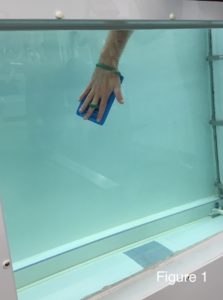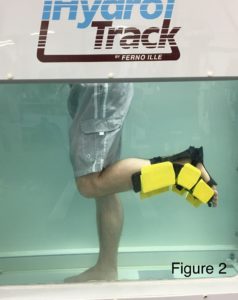1. It provides accommodating resistance to functional movement patterns.
2. The flow of the water can facilitate motion:
• By moving a limb through water, the motion of the water serves to assist the motion being performed.
3. Buoyancy can be used to resist or assist motionand offset compressive forces
• A limb that is moving towards the surface of the water will be facilitated by buoyancy
• A limb moving away from the surface of the water will be resisted by buoyancy
• Devices that are buoyant, such as foam, can be used to add additional resistance to a motion directed away from the surface of the water or to help facilitate the movement of extremities in water increasing the strength and range of the injured extremity3
• Patients with low back pain or lower extremity injuries (sprained ankle, knee, or hip) usually are able to perform exercises easier in the water due to less compressive forces
4. The hydrostatic pressure of the water can help decrease swelling and edema.
• Many orthopedic injuries result in increasedswelling so submerging a body part in water during exercise can reduce swelling
5. Thermal properties of water
• Water temperature can be used to help increase circulation
6. Giving athletes an alternative
• The reduced stress which occurs when exercises are performed in water allows an athlete to return to certain activities earlier in the rehabilitation process which benefits them both physically and mentally.
• Athletes frequently are concerned with loss of strength and speed during rehabilitation from an injury and use of aquatic therapy can help the athlete maintain endurance while protecting their joints and injury site2.
How do some conditions benefit from aquatic therapy?
1. Upper and lower extremity can lead to functional limitations including loss of range of motion, strength, and motor control4.
• Rehabilitation extremities in water can reduce the compressive and tensile forces on a joint while at the same time providing heat to increase flexibility4.
Treatment is performed while the patient is floating, partially, or fully submerged in a tank or pool1
2. Upper Extremity
• Wrist, elbow, and shoulder problems resulting in a loss of range of motion, strength, and control. This includes both post–surgical injuries and other over use and sport musculoskeletal injuries
• Use of a paddle or floatation device to facilitate movement and provide resistance
• Alleviates outside gravitational forces to reduce impact on the joint
3. Lower Extremity
• Hip, knee, and ankle injuries including sprains, strains, and joint replacements can result in pain and loss of range of motion, strength, and stability
• Water facilitate with movement by adding resistance and decreasing the impact on these joints allowing a quicker recover
4. Lower Back Pain
• Overuse injuries including herniated discs or fracturescan cause pain and problems with movement
• Water will relieve a portion of the stress place on the spine when introducing impact movements such as jumping, skipping, and running
• The heat and compression of the water can assist in pain relief
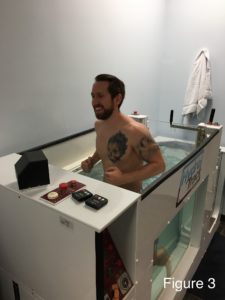
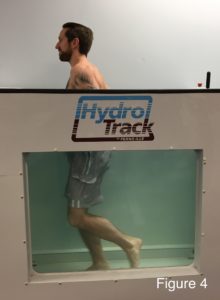
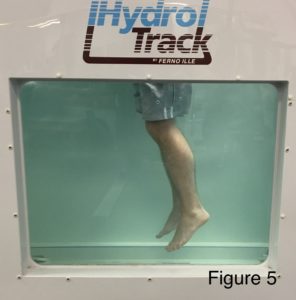
The Sports Rehabilitation Center has implemented aquatic physical therapy rehabilitation practices into patient’s plan of care to decrease the time required to return to prior level of function and increase success rates following injury. Depending on location, a pool or an underwater treadmill can be used for treatment. Patient with injuries ranging from arthritis and low back pain to ACL and rotator cuff repairs can benefit from therapy in the water. Following an initial evaluation, the therapist will determine how to best incorporate water therapy, if appropriate. Aquatic therapy will be used in conjunction with dry land treatments including exercise and manual therapy. Aquatic therapy may even be prescribed as part of your home exercise plan if you have access to a pool outside of the clinical setting. For more information on aquatic rehabilitation, call any of the Sports Rehabilitation location and visit our aquatic rehabilitation page on our website.
Written by: Paul D. Gargas, MA Ed, SPT; Georgia State University, Department of Physical Therapy; 2018
References
1.
Becker, BE and Cole, AJ (eds). 2011. Comprehensive aquatic therapy, 3rd edition. Washington State University Press. ISBN 978-0615365671.2.
de Brito Fontana H et. al. Effect of gender, cadence, and water immersion on ground reaction forces during stationary running,” J Orthop Sports Phys Ther2012;42(5):437-443, Epub 8 March 2012. doi:10.2519/jospt.2012.3572.3. Tovin BJ. Aquatic Rehabilitation of the Shoulder. In: Evaluation and Treatment of the Shoulder: An Integration of the Guide to Physical Therapist Practice. Philadephia, PA: FA David Company; 2001:266-378
